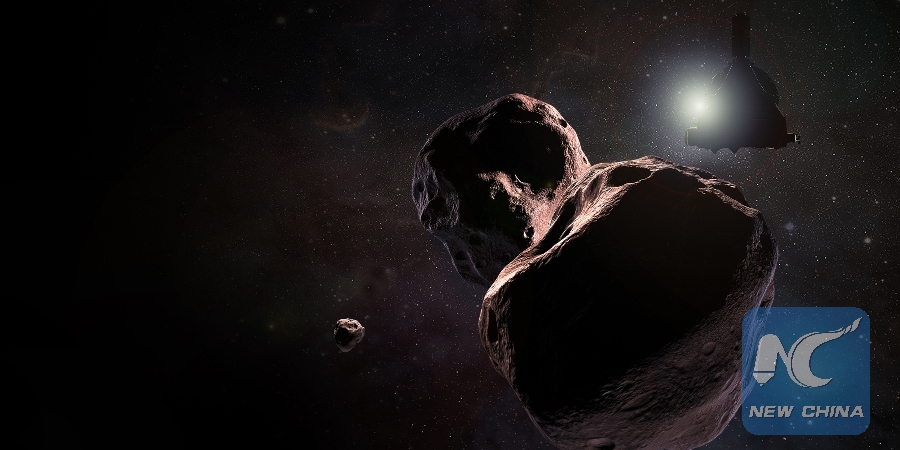
Artist's impression of NASA's New Horizons spacecraft encountering 2014 MU69, a Kuiper Belt object that orbits one billion miles (1.6 billion kilometers) beyond Pluto, on Jan. 1, 2019. (Credits: NASA/JHUAPL/SwRI/Steve Gribben)
LOS ANGELES, Dec. 31 (Xinhua) -- NASA's New Horizons spacecraft will flyby the Kuiper Belt object Ultima Thule on New Year's Day of 2019, making the farthest flyby in history.
The New Horizons is scheduled to flyby the object at 12:33 a.m. EST on Jan. 1.
The spacecraft will pass within 2,200 miles of the surface of the object at a velocity of some 31,500 miles per hour, providing the first close-up look at such a pristine building block of the solar system, according to NASA.
"The New Horizons team reports the spacecraft is healthy and on track for the historic flyby of #UltimaThule just after midnight tonight!" the team tweeted earlier Monday.
Ultima Thule, at 4 billion miles from the sun and and 1 billion miles from Pluto, will be the most distant object ever directly explored, according to NASA.
When the spacecraft arrives, it will turn a suite of instruments onto the mysterious object, and many of its mysteries will be unveiled.
It is the second historic rendezvous for New Horizons, which zipped by Pluto in July 2015 on the first-ever flyby of that world.

